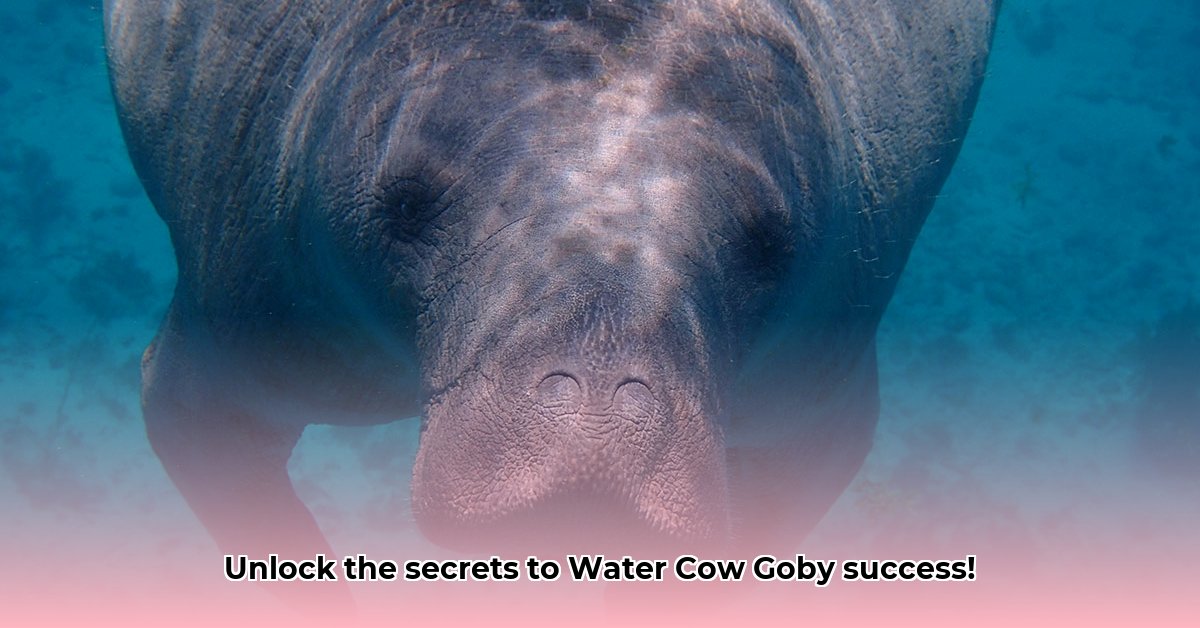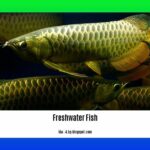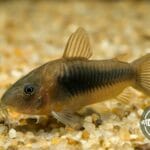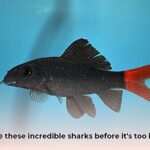Welcome to the definitive guide for successfully keeping Water Cow Gobies ( Eleotris picta ). These fascinating fish, renowned for their distinctive personalities and impressive size, can flourish in your home aquarium with the proper care. This guide provides a comprehensive, step-by-step approach, covering everything from essential tank setup and replicating their brackish environment to understanding their specific dietary needs and selecting suitable tank mates. Prepare to dive into the rewarding world of Water Cow Goby care!
Creating the Ideal Habitat: Tank Requirements and Setup
Providing a spacious tank is paramount for Water Cow Gobies. A single adult requires a minimum 100-gallon tank, but larger is always preferable, especially if you plan to house multiple gobies or create a community environment. Why such a large tank? These active, bottom-dwelling fish require ample space to exhibit their natural behaviors, including foraging, exploring, and establishing territories. A cramped environment can lead to stress, increased aggression, and compromised health, potentially shortening their lifespan. A larger tank promotes a more natural and enriching environment, allowing your gobies to thrive. Furthermore, a larger water volume provides greater stability in terms of water parameters, reducing the risk of sudden fluctuations that can stress the fish.
Creating a naturalistic environment with ample hiding places is crucial. Rocks, caves, driftwood, and dense aquatic plants (choose brackish-tolerant species) not only offer security and visual appeal but also help minimize territorial disputes, particularly in multi-goby setups. Replicating their natural habitat reduces stress, encourages natural behaviors, and contributes significantly to their overall well-being. Think of it this way: just as we humans appreciate a sense of privacy and security in our homes, so too do Water Cow Gobies benefit from a well-structured and stimulating environment.
Mastering Brackish Water Conditions: A Key to Success
Water Cow Gobies hail from brackish water habitats, a mix of fresh and saltwater. Accurately replicating these conditions in your home aquarium is absolutely essential for their health and longevity. Maintaining the correct temperature, pH, and salinity is critical for their physiological well-being and helps prevent diseases.
Temperature: Maintain a stable temperature between 72-82°F (22-28°C) using a reliable, high-quality aquarium heater and a separate thermometer for accurate monitoring. Avoid sudden temperature fluctuations, which can stress the fish.
pH: Keep the pH level within the optimal range of 7.0 and 8.2. Regularly test the pH using a liquid test kit and make adjustments as needed with appropriate aquarium buffers.
Salinity (Specific Gravity): This is arguably the most critical parameter in brackish water aquariums. Aim for a specific gravity of 1.005-1.010. Use a refractometer for precise measurements, as hydrometers can be less accurate. Regular monitoring and adjustments are crucial. Slight variations outside this range might be tolerated, but careful observation of your goby’s behavior is key.
Hardness (dH): Target a water hardness between 10-30 dH. While not as sensitive to hardness as some other species, maintaining a stable dH within this range contributes to a healthy environment.
Regular, partial water changes (approximately 25% weekly) are vital for maintaining optimal water quality. A powerful and efficient filtration system, ideally oversized for the tank, helps remove waste products, maintain water clarity, and ensure proper biological filtration. These practices prevent the buildup of harmful toxins, such as ammonia and nitrates, and create a thriving, stable ecosystem for your gobies.
The Carnivore’s Diet: Fueling Your Water Cow Goby
Water Cow Gobies are carnivorous, requiring a diet rich in animal protein. Offering a varied diet is key to ensuring they receive all the necessary nutrients for optimal growth, vibrant coloration, and robust health. Live or frozen foods form the foundation of their diet and should be offered regularly. Excellent choices include bloodworms, mysis shrimp, brine shrimp, and small pieces of appropriately sized fish, such as feeder guppies or chopped silversides. Avoid offering goldfish as feeders, as they can carry parasites and diseases.
While some aquarists supplement with high-quality sinking pellets or carnivore flakes, these should not constitute the majority of their diet. Live and frozen foods provide essential nutrients and stimulate their natural hunting instincts. Feed your goby several small meals throughout the day, rather than one large feeding, to avoid overfeeding and maintain water quality. Promptly remove any uneaten food to prevent it from decaying and impacting water parameters.
Tank Mates: Choosing Compatible Companions
Selecting tank mates for Water Cow Gobies requires careful consideration and a thorough understanding of their predatory nature. Smaller fish or invertebrates are not suitable companions and will quickly become prey. Larger, fast-moving, and assertive fish that are unlikely to be perceived as food are better choices. However, even with seemingly compatible species, close monitoring is essential to ensure peaceful cohabitation. Potential tank mates could include larger, peaceful brackish water species like some Monodactylus species (e.g., Silver Mono), Scats, or certain puffers.
Even with appropriate tank mates, ample tank space is crucial to minimize territorial disputes and aggression. Provide enough space and hiding places for all inhabitants. A well-structured aquarium with distinct territories can help prevent conflicts. Observe your goby and its tankmates closely for any signs of aggression or stress, and be prepared to separate them if necessary.
Health and Monitoring: Vigilance for a Thriving Goby
Regularly observing your Water Cow Goby is crucial for maintaining its health. A healthy goby exhibits active behavior, vibrant coloration, and a healthy appetite. Changes in behavior or appearance, such as lethargy, loss of appetite, rapid breathing, fin clamping, or dull coloration, can indicate illness, stress, or poor water quality. Early detection of these signs significantly increases the chances of successful treatment.
If you observe any unusual signs, consult experienced aquarists or an aquatic veterinarian. Their expertise can help diagnose and address potential problems, ensuring your goby receives the appropriate care. Providing prompt and appropriate treatment can be life-saving for your aquatic companion.
- Revolution Space: Disruptive Ion Propulsion Transforming Satellites - April 24, 2025
- Race Through Space: Fun Family Game for Kids - April 24, 2025
- Unlocking the Universe: reading about stars 6th grade Guide - April 24, 2025
















